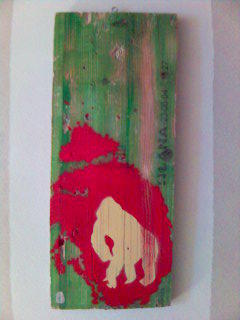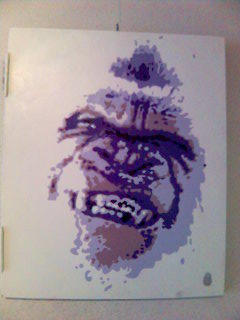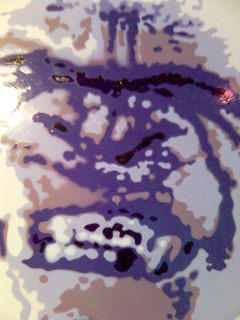I feel tempted to turn this blog into an egocentric trip - to write just what I need to research and develop my own works. And I don't think many people would mind (or notice).
The thing is - that was not my objective. The objective was to dwelve into the flesh of new art and discover it anew. Or simply, to learn. To study the things that catch my attention, to write them down like one pins down a problem or takes a picture. The idea was - and is - to grow a possessive blog.
But I'm tired. And need motivation to go on, in the blog and in the remains of the real world. So this time, I want to think about the direction I'm heading artistically.
First, there is the dilemma: theater, performance, fine (new) arts or cinema. All of these interest me to a great extent; none fascinates me enough to choose it and leave the others behind. Is it possible to carry on so many roads? Only if one has the power of a bull, the endurance of a camel and the mind of a monkey. It overwhelms me. Of course, there are artists who do it (almost) all (Greenaway, Matthew Barney, Forced Entertainment, and several others). But I'm not quite there yet. This is a lonely road for now, and the choices are significant - that means, there are few real-life obstacles and what one wishes to do actually changes what one does (as oppose to other periods in life when reality bites and sticks and doesn't let go that easily). So, going back to school would definitely be a good idea. Getting a Masters somewhere, in something. (
is it worth it?) And guess what - they don't have a MA in theater/performance/new media/cinema.
Enough of sad life stories. What about art?
Two artists I have managed not to write about are Vanessa Beecroft and Maurizio Cattelan. Yes, I wrote about their recently discovered
intertwining, but frankly that was just avoiding any serious writing. Actually, I find them both very interesting, I think they do have some things in common, but would like to write about it some more. And I can't. I'm not ready for it. I think the game(s) they play is so subtle that one can easily go into quick judgements that mean nothing - either praising their "strength", or criticizing the many things they are commonly criticized for. For starters, I would say Cattelan is a modern-day Warhol (I know very little about Warhol, as he knew little about Marilyn/Campbell's/the electric chair). And leave it at that for the moment - for my argument's sake. As for Beecroft... well, it's more complicated, since she says less. Whoever says less wins, says one monk to the other - you lost, answers the latter.
Extrapolating, what I want to use from Beecroft is the idea of a perfect order - or rather, of a completely aestheticized reality. It pleases my theater-moulded mind's eye. People as objects, and, might I add, objects that could be people. In that case, we should rather say:
personas. This reminds me of another great performance - Zhang Huan's
To Raise the Water Level in a Fishpond. 
The performance is translated into pictures - and what we have is actually archive footage. This is a very interesting phenomenon in live art - the "live" part becomes ambiguous. But not put into question, only blurred. We need the conscience of it being, or having been something real. Once we have it, it can very well be represented by a picture, a film, a text or a fingernail. Because through this footage we get to travel in another way. Maybe it's a little like the fascination for biographies?
Going back to Zhang Huan's work. Contrary to Beecroft's girls (and sometimes boys), Zhang Huan's men have stories. They are all about the stories. They are migrants, the cheap labor force that moved from the countryside to Beijing looking for work. And, according to the artist, in China fish is the symbol of sex, while water - the symbol of life. Now that we have the cosmogony, the pictures speak. The
beautiful pictures speak. Beecroft's pictures don't speak. They ostensibly shut up, as abstract painting or some contemporary theater work (Goat Island, some Forced Entertainment). Tim Etchells from Forced Entertainment has a method of writing for performance which is basically writing lists. The spectator fills the blanks. Minimalist? Hmm... no, not quite. Simply a
very small narrative. Notice that Zhang Huan also doesn't say much: he doesn't judge the people, he doesn't interpret them. He shows them.
Then, there's another idea I really like - the intimacy of reading something for someone. As in, reading out loud, but not for the world, just for someone. I'm not sure where I got that from, there are probably some artists working on it, but I only remember my Dad and my Grandfather reading me books when I was a kid. And then - oh, I know! - I think it was Daniel Pennac who wrote a book describing his experience as a school teacher. He read books out loud for the teenage students. Impressive.







